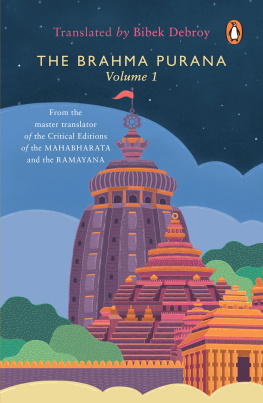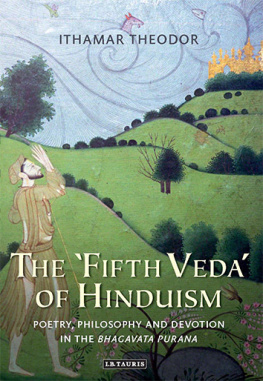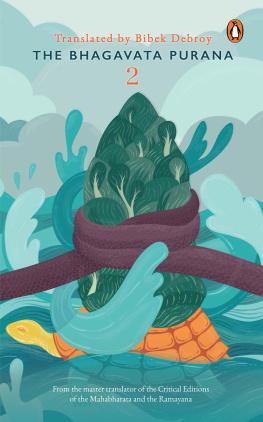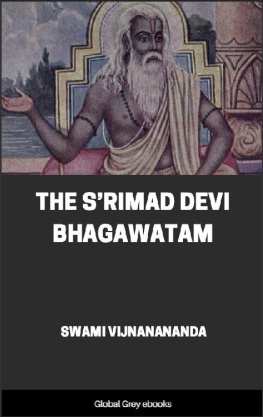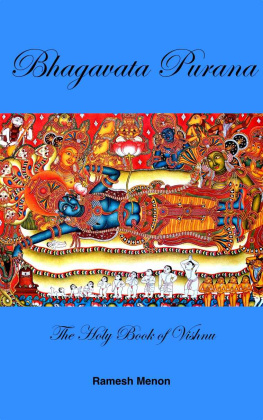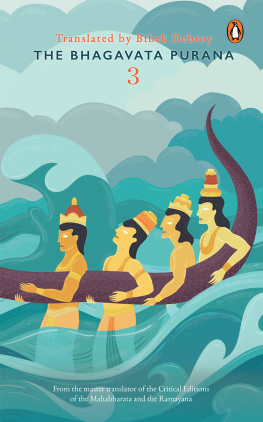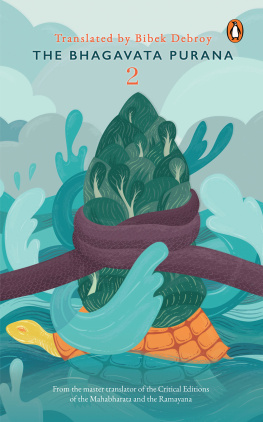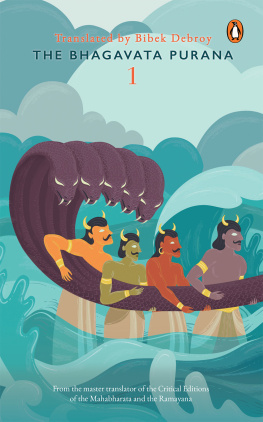Veda Vyasa - Agni Purana Part 2
Here you can read online Veda Vyasa - Agni Purana Part 2 full text of the book (entire story) in english for free. Download pdf and epub, get meaning, cover and reviews about this ebook. publisher: Kausiki, genre: Religion. Description of the work, (preface) as well as reviews are available. Best literature library LitArk.com created for fans of good reading and offers a wide selection of genres:
Romance novel
Science fiction
Adventure
Detective
Science
History
Home and family
Prose
Art
Politics
Computer
Non-fiction
Religion
Business
Children
Humor
Choose a favorite category and find really read worthwhile books. Enjoy immersion in the world of imagination, feel the emotions of the characters or learn something new for yourself, make an fascinating discovery.

- Book:Agni Purana Part 2
- Author:
- Publisher:Kausiki
- Genre:
- Rating:5 / 5
- Favourites:Add to favourites
- Your mark:
- 100
- 1
- 2
- 3
- 4
- 5
Agni Purana Part 2: summary, description and annotation
We offer to read an annotation, description, summary or preface (depends on what the author of the book "Agni Purana Part 2" wrote himself). If you haven't found the necessary information about the book — write in the comments, we will try to find it.
Veda Vyasa: author's other books
Who wrote Agni Purana Part 2? Find out the surname, the name of the author of the book and a list of all author's works by series.
Agni Purana Part 2 — read online for free the complete book (whole text) full work
Below is the text of the book, divided by pages. System saving the place of the last page read, allows you to conveniently read the book "Agni Purana Part 2" online for free, without having to search again every time where you left off. Put a bookmark, and you can go to the page where you finished reading at any time.
Font size:
Interval:
Bookmark:
Agni Purana
Chapters 101 200
Digital Publishers
Kausiki
* * *
www.kausiki.com
* * *
The Lord said:
1-5. I shall describe the mode of consecrating a temple. By that itself it would become permeated by the divine force. After the angular projection is completed, the preceptor should locate a pitcher made of gold or other metals at the middle of the eastern altar. It should be filled with the panchagavya (five things got from a cow), honey and milk. Five kinds of gems should be placed under (the pitcher). (The pitcher) should be adorned with garland and cloth. It should be besmeared with fragrance. It should be decorated with fragrant flowers. The temple should be decorated with tender leaves of trees like mango etc. After having finished the accomplishing rite in his body, the preceptor should gather (his soul energy) with the breath drawn in. The preceptor should then convey to (lord) Sambhu (Siva) by his command with the exhalation of breath after the soul had been conceived as different from all the (other) souls with (the recitation of) its own mantra.
6. After having gathered the same from the twelve-petalled, that one shining like a spark-of fire, the beatific states should be located in the pitcher as laid down in the tantras.
7. The image, its qualities, the beatific states, the letters up to ka and their lords and the collection of fundamental principles should be located.
8. The ten nadis (tubular organs of the body), ten vital winds and the thirteen sense-organs as well as their presiding deities (should be located) after having united the syllable om with their names.
9. (The two fundamental principles of) illusion and universal space which stand in relationship of cause and effect towards each other, the gods of learning who direct the pervading (lord) Sambhu (Siva) (should also be located therein) with the (recitation of) mantras.
10-12. After having located the accessories, the preceptor should prevent (the deity) from going away by showing the rodhamudra (posture made with the fingers denoting restraint). Otherwise an image of the god (should be made) of gold or other metals and it should be purified as before with the five things got from a cow etc. After having placed the pitcher on the bed and contemplating (lord) Rudra, the consort of Uma, (the lord) should be located in that (image) as the pervasive (lord). Oblation, sprinkling, touching and repetition (of mantras) (should be done) for accomplishing (lord's) stay therein permanently.
13. After having completed thus the announcement of invocation in its three divisions, the preceptor should place the image in the pitcher.
The Lord said:
1. O Skanda! I shall describe (the mode of) consecration of the pinnacle, the banner and the flag-staff relating to a temple as laid down.
2. Either it should be half the depth of the tank or of the whole edifice. The banner-staff should be made of wood in the case of (a temple) built of brick and of stone in the case of that built of stone.
3. In the case of a temple of Vishnu, the pitcher should have the mark of a disc and be proportionate to the image of the deity. If it is with a trident it is known as agracla (the tip of the top portion).
4. If the (mark of a) linga is found on the top it is called Ishasula (the banner-staff of Siva). This kind of flagstaff) is also found to be described in saivite texts as having the bijapuraka
(of the shape of common citron)
5. The coloured banner should be made to reach down to the half of the plinth (of the temple), or to commensurate with its entire length, or of the same length with its rod, according to the option (of the consecrator).
6-7. That banner is known as the mahadhvaja (great banner) which flaps around the platform of the edifice. The rod measuring fourteen, nine or six cubits in length should be known as the excellent etc. by learned men. A flagstaff made of a bamboo or of wood etc. yields all desires.
8. A flagstaff breaking down in the middle at the time of planting the same augurs evil to the sovereign of the country or to the consecrator.
9. It should be remedied by (the repetition of) the bahu- rupamantra. Then the guardian deities of the door should be worshipped and appeasement with the mantras (should be done).
10-12. After having placed the flagstaff, it should be bathed with (the repetition of) the mantra of the weapon. After having sprinkled the flagstaff (with water) with (the repetition of) the same mantra, the preceptor should then bathe (it) with herbal waters and make the divine edifice. After having smeared (the rod) with juice and laid on the bed as before, the location (of the mantras) (is done) in the flagstaff as in the case of the linga. But one should not locate the energies of knowledge and action. There is no need to use the fourth case (of inflection) indicating speciality. There is also no need for constructing an altar.
13-14. Then the principle of artha (sense), the second principle of knowledge and the faces (of Siva) such as Sadyojata etc. and the principle of Siva (should be located) in the flagstaff. Lord Siva, the indivisible, whose attendants have been located should be worshipped. Then oblations should be made with the vedic mantras for the sake of the presence of the flagstaff and ending with (the word phat for every part of the flag staff. The flagstaff is also consecrated in a different way.
15-17. All about this has been described in the mode of the astrayaga. After the temple has been made, the bedstead and the quadrangle having been decorated at the (decided) place, and the three fundamental principles have been located therein, the oblations etc. should be offered and then (lord) Siva should be worshipped as before.
18-22. After having meditated on (lord) Siva as the repository of all the principles, the all-pervasive god should be located (therein). The (gods) Ananta (serpent chief) and Kalarudra (a form of lord Siva) should be considered as lying at the lotus feet, the (lords) Kusmanda and Hataka at the platform at the top of the plinth and the guardian deities along with the nether worlds, hells, other worlds and the hundred Rudras representing the cosmic egg having been contemplated should be considered at the plinth. Then (the preceptor) should contemplate the picture of a man on the cloth with a lion on the left along with the forty such as principles of water, lustre, and wind, that which is known as enclosing all things, the eight resultant of the intellect, the eight kinds of yoga, and the three qualities ending with destruction. The four (principles of) learning etc. (should be considered) as located in the cornice of the temple.
23. The (principle of) illusion along with (lord) Rudra (are located) in the neck, the learning in the threshold, the mystic circle, the master along with the lord of learning in the (ornamental) pot above.
24. It should be conceived as the matted hair and the crescent (on the top) as the trident (of the lord). The three energies (should be located) in the flagstaff and should be looked upon (as permeated) with the sound.
25-26. (The preceptor) should also conceive that the energy (known as) kundali is present in the banner. Thus (the different gods) should be conceived as present in that abode. After having lifted the linga along with its pedestal or with the earth (lying at its bottom) with (the recitation of) the mantras, it should be placed in its seat namely the lotus of energy after having placed the gems etc.
27. After the banner staff has thus been fixed, the person for whom the rite is performed gets the desired fruits after circumambulating the edifice along with his relatives and friends.
Next pageFont size:
Interval:
Bookmark:
Similar books «Agni Purana Part 2»
Look at similar books to Agni Purana Part 2. We have selected literature similar in name and meaning in the hope of providing readers with more options to find new, interesting, not yet read works.
Discussion, reviews of the book Agni Purana Part 2 and just readers' own opinions. Leave your comments, write what you think about the work, its meaning or the main characters. Specify what exactly you liked and what you didn't like, and why you think so.

